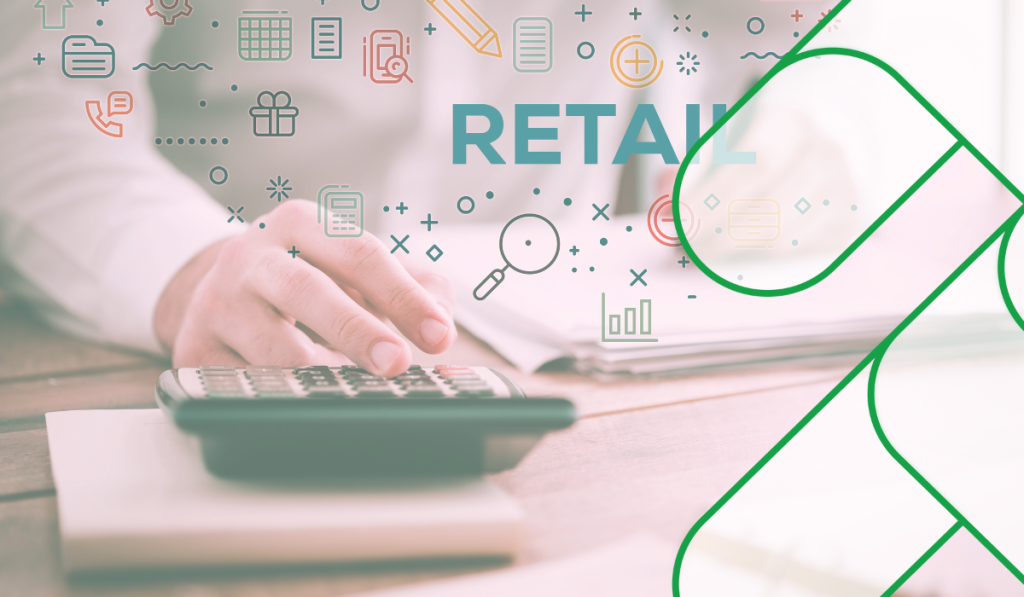
Supply chain traceability aims to recognize and monitor all production, distribution, and custody chain stages involved in a product’s journey. Supply chain traceability facilitates sustainability, compliance, and transparency by promoting business resilience and enhancing the management of partner ecosystems. It empowers consumers to make informed purchasing choices and holds brands accountable.
This article will explore key trends related to technology implementation in supply chain traceability. Furthermore, we will explore this industry’s potential prospects and advancements.
Digital technologies are revolutionizing supply chain traceability, giving businesses visibility and control over their operations they have never had before. The Internet of Things (IoT) and sensor technologies are strategically positioned across the supply chain to collect real-time data on important factors like product location, temperature, humidity, etc. This abundance of data enables precise tracking and guarantees the best quality control procedures.
Another essential component of the digital revolution in supply chain traceability is AI and ML algorithms. Businesses can process enormous volumes of supply chain data, detect patterns, forecast demand, optimize logistics, and improve decision-making by utilizing advanced analytics and machine learning (ML) algorithms. For example, AI-powered video analytics systems can watch security camera data to identify and tag behaviors, thus reducing thousands hours of surveillance to just a few hours of relevant footage.
Retail robots are also creating a name for themselves in the field of supply chains. These self-sufficient robots are used in fulfillment centers, warehouses and even supermarkets to automate time-consuming chores like picking, packing and stock predictions. Companies may dramatically eliminate errors, improve operational efficiency, and boost overall output by decreasing human involvement in specific routine processes.
The use of distributed ledger and blockchain technologies is growing as dependable options for supply chain traceability. Blockchain offers a decentralized, immutable database for securely recording and verifying transactions along the supply chain. This system improves transparency, stops fraud, and guarantees data integrity. Because every transaction and movement of goods is clearly recorded and can be accessed securely with blockchain, businesses can build confidence among stakeholders and enable end-to-end visibility.
As companies work to fulfill the growing need for real-time tracking and monitoring, transparency and visibility are essential components of supply chain traceability. The demand for current information about the whereabouts, state, and progress of their orders is one significant trend in this sector. Companies rely on technology like GPS, RFID, and cloud-based platforms to give customers real-time insight into their supply chains to meet this demand. Customers can track their products in real-time thanks to the Uberization of delivery services, for instance, which improves their overall pleasure.
The use of data-driven decision-making throughout the supply chain is another significant development. For example, a CCTV analytics solution can help organizations make decisions based on reliable information. When this data is analyzed using advanced analytics tools, organizations can manage inventory levels, spot bottlenecks, predict demand patterns, and make strategic decisions.
Using technologies and analytics tools, companies may quickly meet customer expectations, improve supply chain operations, and adjust to shifting market conditions. This proactive approach raises operational performance, cost-effectiveness, and market competitiveness and increases customer happiness.
The consumer’s increasing demand for products with ethical and sustainable sourcing is one crucial factor. Thanks to traceability, companies can verify and share the ethical and sustainable practices used throughout their supply chains. Companies may empower customers to make educated decisions that align with their beliefs by giving transparency and insight into the product’s origin and manufacturing processes. This transparency encourages ethical sourcing and supports environmentally and socially conscious corporate operations, satisfying consumer demand for such items.
Furthermore, it is crucial for companies operating in a variety of industries to comply with regulatory standards. Product safety, ethical sourcing, and environmental effect are all subject to strict laws in many sectors. Supply chain traceability provides precise and trustworthy information on product origins, ingredients, and manufacturing processes to ensure compliance with these laws. Companies can reduce their risk of fines, legal problems, or reputational damage using reliable traceability systems. Traceability also shows a dedication to respecting moral norms and strengthening consumer confidence in the company.
Supply chain transparency is essential for fostering patron loyalty and confidence. Companies can improve their brand reputation, reassure customers of product authenticity and ethical sourcing, and satisfy the demands of ethical consumers by adopting transparency and offering visibility into their supply chains. This promotes long-term partnerships, increases client loyalty, and establishes organizations as reliable and trustworthy competitors. A strong tactic for businesses trying to acquire a competitive edge and foster enduring client loyalty is to embrace supply chain traceability.
Finding possible weaknesses in the supply chain is one of the main benefits of traceability. Companies can spot weak points, bottlenecks, or potential threats that may appear at various stages of the process by having a detailed picture of the entire supply chain. Because of this awareness, firms are better equipped to take preventative action to reduce these risks before they become more serious problems.
Traceability along the supply chain is essential for handling quality and product recall issues. Traceability permits quick and precise product recall in the sad case of a quality fault or safety problem. Companies can precisely identify the damaged batches or items by tracking the origin and movement of products, minimizing the possible impact on customers, and preserving the company’s reputation. With effective traceability systems, targeted recalls may be carried out quickly, causing the least waste, expense, and harm to natural products.
Supply chain traceability enhances inventory management, streamlines workflows, and reduces waste, which substantially impacts operational efficiency. Companies may find and eliminate inefficiencies, improving coordination and overall performance by utilizing real-time data and insights.
Furthermore, firms can optimize inventory levels, cut expenses associated with keeping an inventory, and eliminate waste thanks to accurate visibility into product placement and demand trends. Adopting supply chain traceability as a strategic strategy can increase operational effectiveness, reduce costs, and enhance customer response, ultimately boosting a company’s competitiveness and profitability.
Although supply chain traceability has many advantages, it is essential to understand and address the difficulties that come with it.
Businesses need to put strong protection measures, secure systems, and encryption techniques first if they want to guarantee data integrity. Data collection, storage, and sharing should be governed by explicit policies and processes that respect privacy laws.
Extensive traceability system implementation can be difficult and time-consuming, especially for businesses with complex supply networks. Technology, data, and stakeholder integration require careful planning and investment. The complexity and expense are increased by deploying hardware, software, networking infrastructure, and employee training. Organizations must evaluate the operational and financial ramifications and create a clear path that balances costs and anticipated gains.
Due to worries about transparency or alleged constraints, stakeholders may be reluctant to embrace new procedures or share data. Seamless integration needs to be improved by the need for uniform standards for data formats and interoperability. To overcome these barriers, active participation, effective communication, and stakeholder interest alignment are required. Interoperability and adoption can be supported by cooperation and the creation of sector-wide standards.
Future developments in technology will completely transform supply chain traceability. Artificial intelligence (AI) and machine learning (ML) technology will make the enormous and complicated supply chain data processing possible. Thanks to predictive modeling and advanced analytics, businesses can optimize operations, foresee potential interruptions, and take preemptive action.
Organizations will be able to precisely estimate demand using AI and ML, streamline logistics, and improve the efficiency of their supply chains overall. Additionally, combining real-time data with advanced analytics techniques will make predictive modeling possible. This will enable organizations to take preemptive measures and make data-driven decisions to increase operational efficiency and improve supply chain outcomes.
Addressing the difficulties of supply chain traceability requires cooperation and interoperability. Industry-wide standards and norms must be established for traceability systems to integrate and operate more quickly. Organizations may ensure seamless data transmission and increase the overall success of traceability projects by adopting standard data formats, communication protocols, and data-sharing policies.
Transparency and traceability will also be promoted across the supply chain by creating collaborations and sharing information among stakeholders, including suppliers, manufacturers, distributors, and retailers. The partnership allows for a comprehensive perspective of the complete supply chain, enabling precise tracking and monitoring of goods, materials, and data, improving visibility, and increasing operational effectiveness.
Supply chain traceability is a game-changer for contemporary firms since it provides transparency, sustainability, and operational efficiency. Companies can profit significantly from traceability by embracing digital technology, emphasizing transparency and visibility, and tackling environmental issues.
Despite difficulties, supply chain traceability has a bright future thanks to technological improvements, cooperation, and supporting government policies. Investment in traceability solutions is essential for businesses to maintain their competitiveness, win over their clients’ trust, and effectively navigate the changing market environment.

Examining the challenges of data black holes and providing a practical tips for organizations seeking to harness the full potential of their data ecosystems.

This article explores omnichannel retail. It covers its advantages, the technology driving it, the implementation challenges companies face, and future trends.

A comprehensive overview of how fintech innovations drive significant changes in the retail industry.
Copyright © 2023 rinf.tech. All Rights Reserved.
Terms & Conditions. Cookie Policy. Privacy Policy.
Politica Avertizari de Integritate (RO)